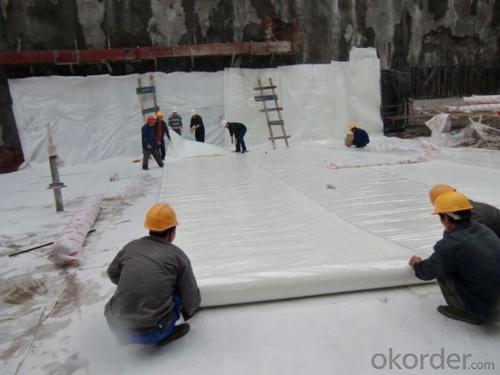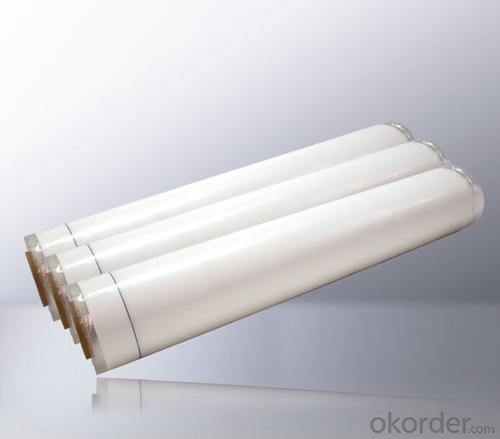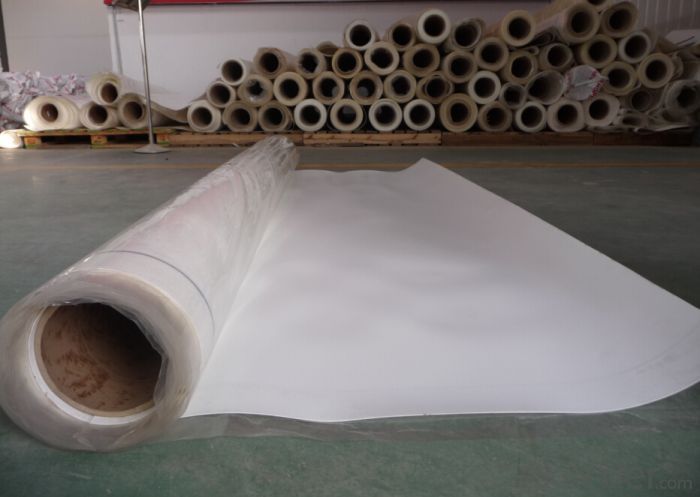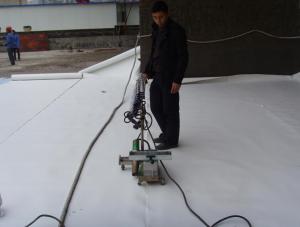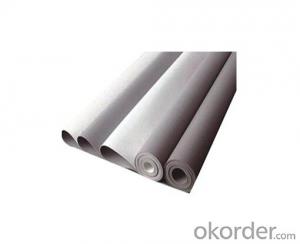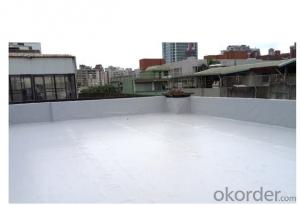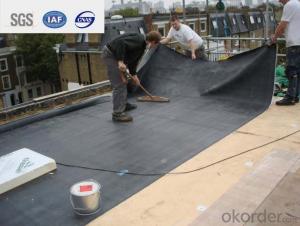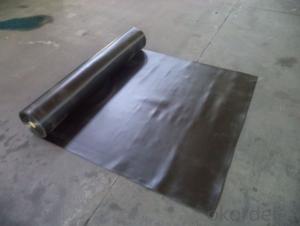HDPE Self-adhesive Waterproof Membrane 1.5mm
- Loading Port:
- Tianjin
- Payment Terms:
- TT or LC
- Min Order Qty:
- 5000 m²
- Supply Capability:
- 100000 m²/month
OKorder Service Pledge
OKorder Financial Service
You Might Also Like
HDPE Waterproof Membrane
High-density Polyethylene (HDPE) Self-adhesive Waterproof Membrane is specially used in underground project, it can bond with concrete layer tightly. After Membrane bonding with concrete, water can be blocked between membrane and concrete, which can improve the reliability.
Product Applications:
Basement,Subway,Tunnel Cave, Other underground public constructions.
Product Advantages:
1. Good bonding with concrete applied on membrane, to block water between membrane and concrete further to protect concrete effectively.
2. Low flatness requirement to substrate, reliable overlapping; mechanical fixing, easy application.
3. Sound anti-puncture performance.
4. Adaptable to settlement and distortion.
5. Weather-resisting and anti-UV.
6. Resist to acid, alkali, mold.
7. Eco-friendly material
Product Specifications:
Width(m) | Length(m) | Thickness(m) |
1.2 or 2.4 | 20 or more | 1.2 or 1.5 |
Test item | Test Method | Unit | Requirement | ||
Water tightness to liquid water | EN 1928 | — | 60KPa,24h,Pass | ||
Resistance to static loading | EN 12730 | Kg | 20 | ||
Tensile force | Longitudinal | EN 12311-2 | N/50mm | ≥800 | |
Transversal | EN 12311-2 | N/50mm | ≥800 | ||
Elongation/ | Longitudinal | EN 12311-2 | % | ≥500 | |
Transversal | EN 12311-2 | % | ≥500 | ||
Durability of water tightness against chemicals | EN 1847 Test afterwards to EN1928 | - | 60KPa,24h,Pass | ||
Durability of water tightness against ageing | EN 1296 Test afterwards to EN1928 | - | 60KPa,24h,Pass | ||
Resistance to impact | EN 12691-B | mm | 600mm | ||
Resistance to tear(Nail Shank)-unreinforced sheets | Longitudinal | EN 12310-1 | N | ≥500 | |
Transversal | EN 12310-1 | N | ≥500 | ||
Peel resistance of joint | EN 12317-2 | N/50mm | ≥400 | ||
Resistance to alkali | EN 1847 Test afterwards to EN1928 | - | 60KPa,24h,Pass | ||
Length | EN 1848 | m | ≥20 | ||
Width | EN 1848 | m | 2.4±0.024/1.2±0.012 | ||
Mass per unit area | EN 1849 | Kg/m2 | ≥1.45(1.5mm); ≥1.15(1.2mm) | ||
Straightness | EN 1848 | mm/10m | ≤20 | ||
Visible defects | EN 1850 | - | No visible defects | ||
Bitumen compatibility | EN 1548 | - | 60KPa,24h,Pass | ||
FAQ:
Q: Can I visit your company?
A: Yes, welcome to visit our enterprise.
Q: Can I do the third party testing before loading?
A: Yes, we could accept the third party testing.
Q: Which kind of payment in your company?
A: We could accept TT, LC at sight, etc.
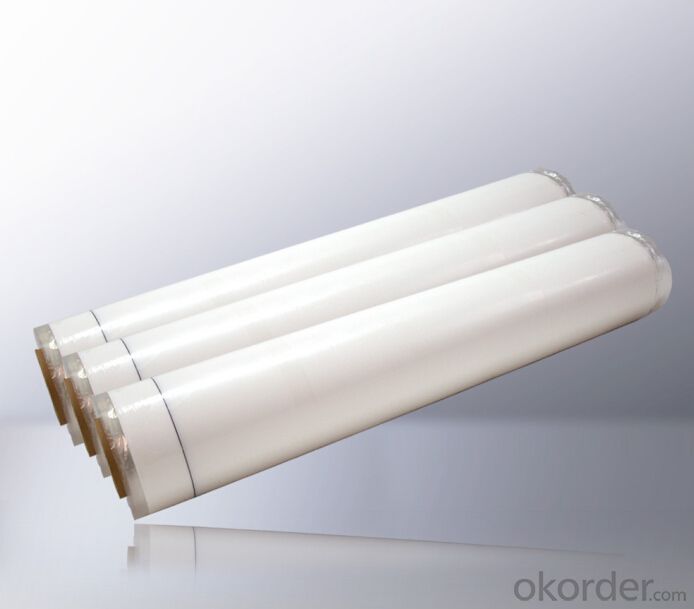
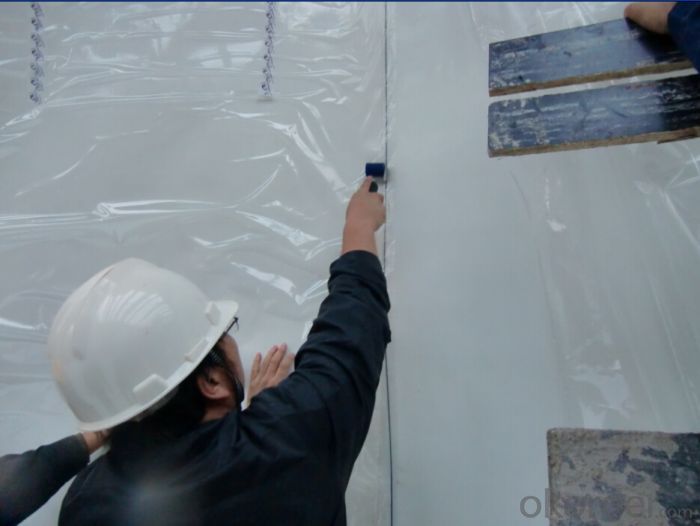
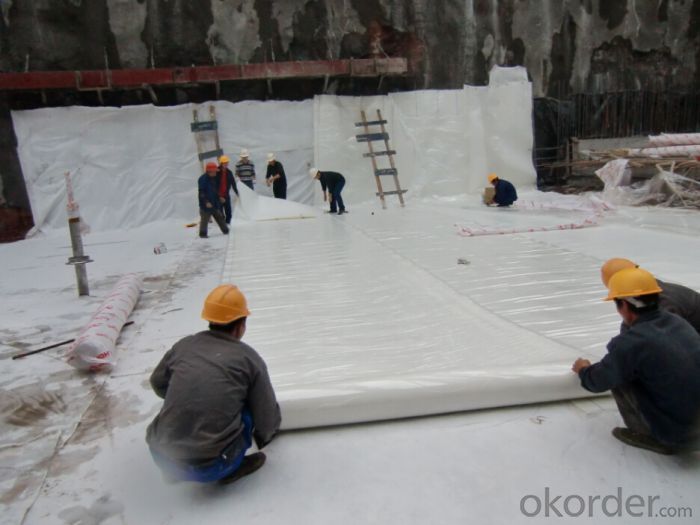
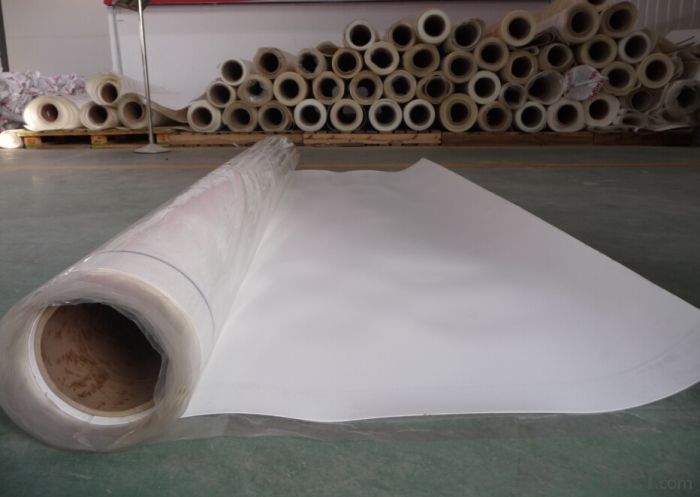
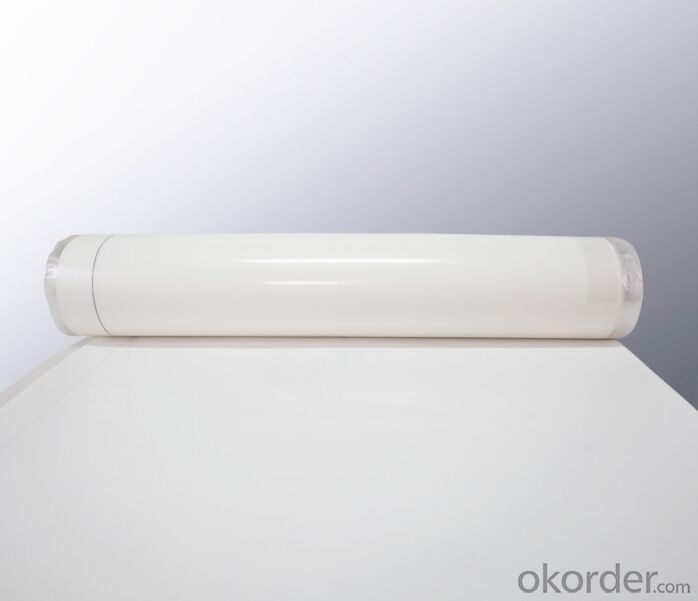
- Q: Can a waterproofing membrane be used in high-traffic areas?
- Yes, a waterproofing membrane can be used in high-traffic areas. Waterproofing membranes are designed to provide a protective barrier against moisture and water infiltration, making them suitable for use in areas that experience heavy foot traffic. These membranes are typically durable and resistant to wear and tear, ensuring their effectiveness and longevity even in high-traffic environments. Additionally, some waterproofing membranes are specifically designed for high-traffic areas and have additional features such as anti-slip properties to enhance safety. However, it is important to choose the right type of waterproofing membrane that is specifically designed for high-traffic areas to ensure maximum performance and durability. Consulting with a professional or a waterproofing expert can help determine the most suitable membrane for a specific high-traffic application.
- Q: Can waterproofing membranes be used on metal flashing?
- Yes, waterproofing membranes can be used on metal flashing. Waterproofing membranes are designed to create a protective barrier against water and moisture, and they can be applied to various surfaces, including metal flashing, to prevent water infiltration and potential damage.
- Q: Can a waterproofing membrane be used in kitchens?
- Yes, a waterproofing membrane can be used in kitchens. In fact, it is highly recommended to use waterproofing membranes in areas prone to moisture and water exposure, such as kitchens. These membranes are designed to create a barrier against water and prevent it from seeping into the underlying structure, protecting it from damage. They are commonly used on floors, walls, and even countertops to ensure a watertight seal and prevent water damage, mold growth, and other issues. Additionally, waterproofing membranes can also help with soundproofing and provide added durability and longevity to the kitchen surfaces.
- Q: Can a waterproofing membrane be used for elevator pits and sump pits?
- Elevator pits and sump pits, commonly prone to water leakage and moisture problems, can benefit from the use of a waterproofing membrane. These membranes are designed to resist water penetration and create a barrier against water intrusion, effectively sealing the pits. Materials such as rubberized asphalt, EPDM, or PVC are typically used to construct these membranes, which are then applied to the walls and floors of the pits. The installation of a waterproofing membrane provides protection to the elevator and sump pits, safeguarding them against water damage, including corrosion, mold growth, and structural deterioration. This not only ensures the functionality and durability of the pits but also creates a safe and healthy environment for occupants and equipment. Nevertheless, it is essential to consider the specific requirements and regulations of elevator and sump pit installations, as different jurisdictions may have their own codes and standards that must be adhered to. Furthermore, proper installation and regular maintenance of the waterproofing membrane are crucial to guarantee its effectiveness in preventing water infiltration.
- Q: Can a waterproofing membrane enhance the durability or lifespan of a structure?
- Yes, a waterproofing membrane can enhance the durability and lifespan of a structure by providing a protective barrier against water infiltration, preventing damage from moisture, leaks, and deterioration caused by water-related issues.
- Q: Can a waterproofing membrane be used for residential swimming pools?
- Indeed, residential swimming pools can benefit from the use of a waterproofing membrane. These membranes are frequently employed in construction to safeguard against water infiltration and can be utilized on diverse surfaces including concrete, tile, and metal. By forming a barrier, they effectively prevent water from permeating the pool structure, thereby preserving its integrity and averting leaks. Furthermore, waterproofing membranes afford protection against other types of harm such as corrosion and deterioration resulting from chemicals or adverse weather conditions. Consequently, it is crucial to choose a top-notch waterproofing membrane specifically designed for swimming pool applications in order to guarantee long-lasting safeguarding and durability.
- Q: Can a waterproofing membrane be used for a swimming pool?
- Yes, a waterproofing membrane can be used for a swimming pool. Waterproofing membranes are commonly used in construction to prevent water penetration and leakage. When applied to the walls and floor of a swimming pool, a waterproofing membrane creates a barrier that prevents water from seeping into the surrounding structures. This is crucial for maintaining the integrity of the pool and preventing damage to the surrounding areas. Waterproofing membranes for swimming pools are specifically designed to withstand the constant exposure to water and chemicals, ensuring long-lasting protection.
- Q: Are waterproofing membranes resistant to chemical solvents?
- Yes, waterproofing membranes are generally resistant to chemical solvents. Most waterproofing membranes are designed to withstand exposure to various chemicals, including solvents. They are specifically formulated to provide a barrier against moisture and also protect against damage from chemical exposures. This resistance to chemical solvents is an important feature of waterproofing membranes, as it ensures their durability and effectiveness in a wide range of applications, such as in construction, roofing, and below-grade waterproofing. However, it is important to note that the specific resistance of a waterproofing membrane to chemical solvents can vary depending on the type and brand of membrane used, so it is always recommended to consult the manufacturer's guidelines for specific information on chemical resistance.
- Q: Can a waterproofing membrane be used in high-rise buildings?
- Yes, a waterproofing membrane can be used in high-rise buildings. In fact, it is highly recommended to incorporate a waterproofing system in high-rise buildings to protect them from the damaging effects of water infiltration. Waterproofing membranes are designed to provide a barrier against water ingress, preventing leaks and moisture damage to the structure. They are commonly used on roofs, basements, foundations, and other areas that are exposed to water or moisture. The selection of the appropriate waterproofing membrane will depend on various factors such as the specific building design, construction materials, and environmental conditions. It is important to consult with experienced waterproofing professionals to determine the most suitable membrane system for a high-rise building to ensure long-term protection against water-related issues.
- Q: Are waterproofing membranes resistant to acid exposure?
- The resistance of waterproofing membranes to acid exposure can differ depending on the specific type of membrane used. Certain waterproofing membranes are engineered to withstand acid exposure, whereas others may not have the same resistance. Therefore, it is of utmost importance to meticulously choose the suitable waterproofing membrane for the particular application and environment where acid exposure could be an issue. Seeking guidance from manufacturers or industry professionals is also recommended in order to determine the most effective waterproofing membrane solution for areas prone to acid.
Send your message to us
HDPE Self-adhesive Waterproof Membrane 1.5mm
- Loading Port:
- Tianjin
- Payment Terms:
- TT or LC
- Min Order Qty:
- 5000 m²
- Supply Capability:
- 100000 m²/month
OKorder Service Pledge
OKorder Financial Service
Similar products
Hot products
Hot Searches
Related keywords





